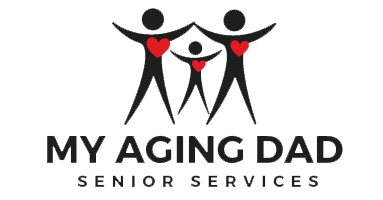Assessing and Modifying the Home
A home hazard assessment is a service provided by an occupational therapist. One way to achieve this is by providing recommendations for home adjustments that can prevent falls, which are one of the leading causes of injuries among older adults.
Preventing falls is crucial, especially among older adults who are more susceptible to injuries. As an occupational therapist (OT), one of your key responsibilities is to assess homes for potential fall hazards and provide recommendations for adjustments. By taking simple steps to modify living spaces and raise awareness of potential risks, you can significantly reduce the risk of falls and help your clients maintain their independence and quality of life. There are many new products and as we learn about more, we will continue to list them here. If you find any others that are helpful, please send them over. (Anna@myagingdad.org)
Assessing and Modifying the Home
The first step in preventing falls is to assess the layout of the home. Are there any hazards that could cause someone to trip or stumble? These could include rugs, cords, or uneven surfaces. If these hazards are present, it is crucial to remove or repair them as soon as possible. Additionally, you should recommend the installation of handrails in areas with stairs, such as the entrance or bathroom. Handrails can provide support and stability, reducing the risk of falls. Another critical aspect to consider is lighting. Adequate lighting is essential in preventing falls, especially for individuals with low vision. Ensure that all areas of the home are well-lit, and consider the use of nightlights in the bedroom and bathroom. Motion sensor lighting can also be installed in high traffic areas, providing additional visibility.
Engaging Clients in Identifying Hazards
Raising a person’s awareness of potential hazards in their home has to be broken down into sections. Consider starting with asking them to show you how they get through their front door. I like actively involving the person in identifying
physical fall hazards in their space. Examples include throw rugs, clutter, steps that are too steep or too long, poor lighting, extension cords across walkways, or the toilet seat being too low.
Behavioral hazards include bringing awareness to using safer behaviors when an older adult is doing tasks independently. In this instance, taking your time when going down the stairs, or asking for help when changing a light bulb. Emphasize to clients to ask themself if they want to put themselves in this situation if it's not safe.
Providing Helpful Resources
Encouraging your clients to use assistive devices, such as canes or walkers, can also improve their balance and stability. These devices should be properly fitted to the individual's height and strength, and education should be provided on their proper use.
Identifying home hazards without the help of a therapist can be overwhelming. Below I have lInked is a very readable checklist to start looking at making small changes, in the rooms/areas of the space that are essential to living. Subscribe to the blog and we’ll send you a copy of one of the best checklists we have found.
In conclusion, making these simple home adjustments can significantly reduce the risk of falls for your clients, helping them maintain their independence and quality of life. As an occupational therapist, you play a critical role in promoting safety and well-being, and your recommendations can have a lasting impact on your clients' lives.
Get The Checklist


